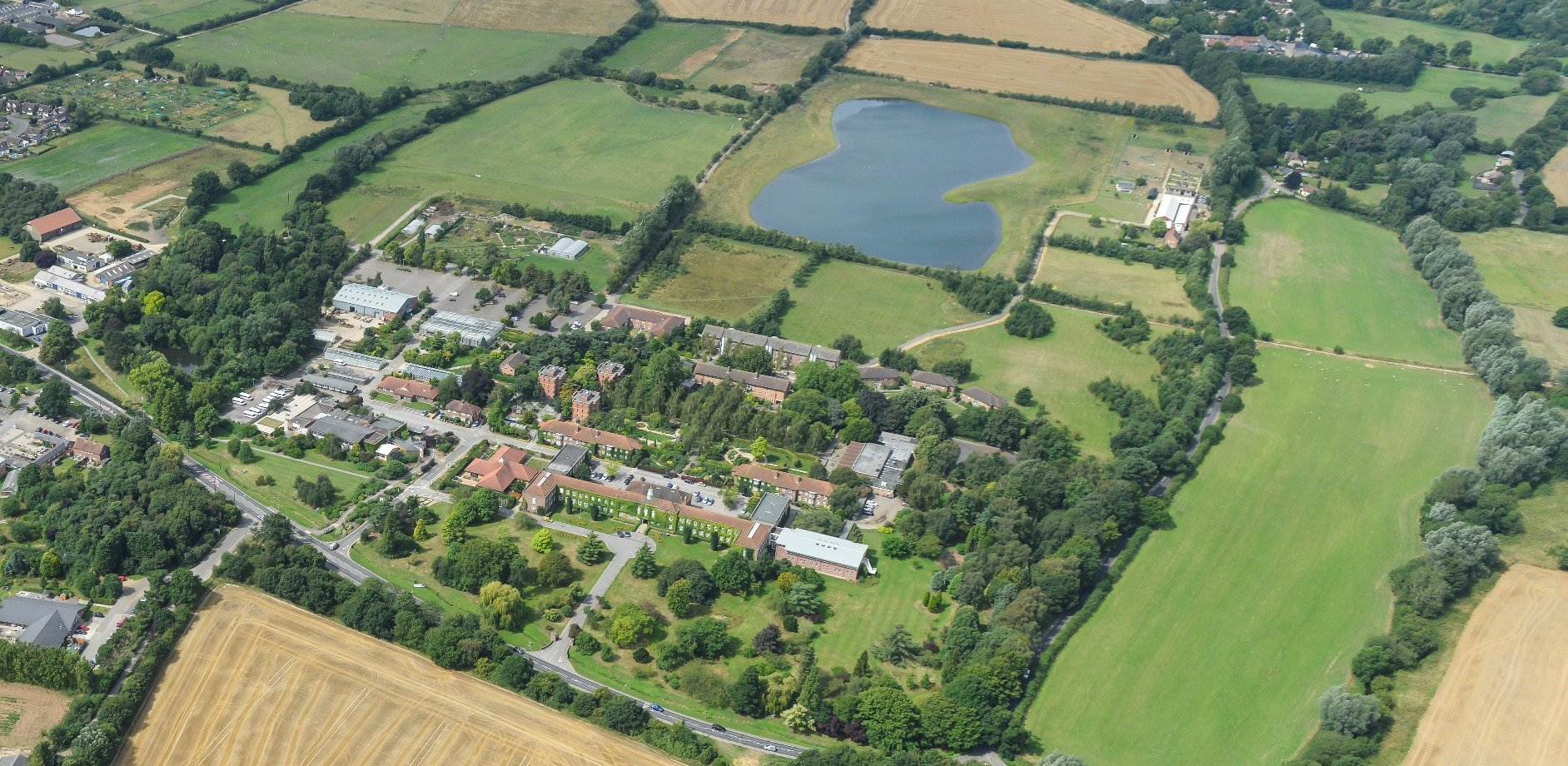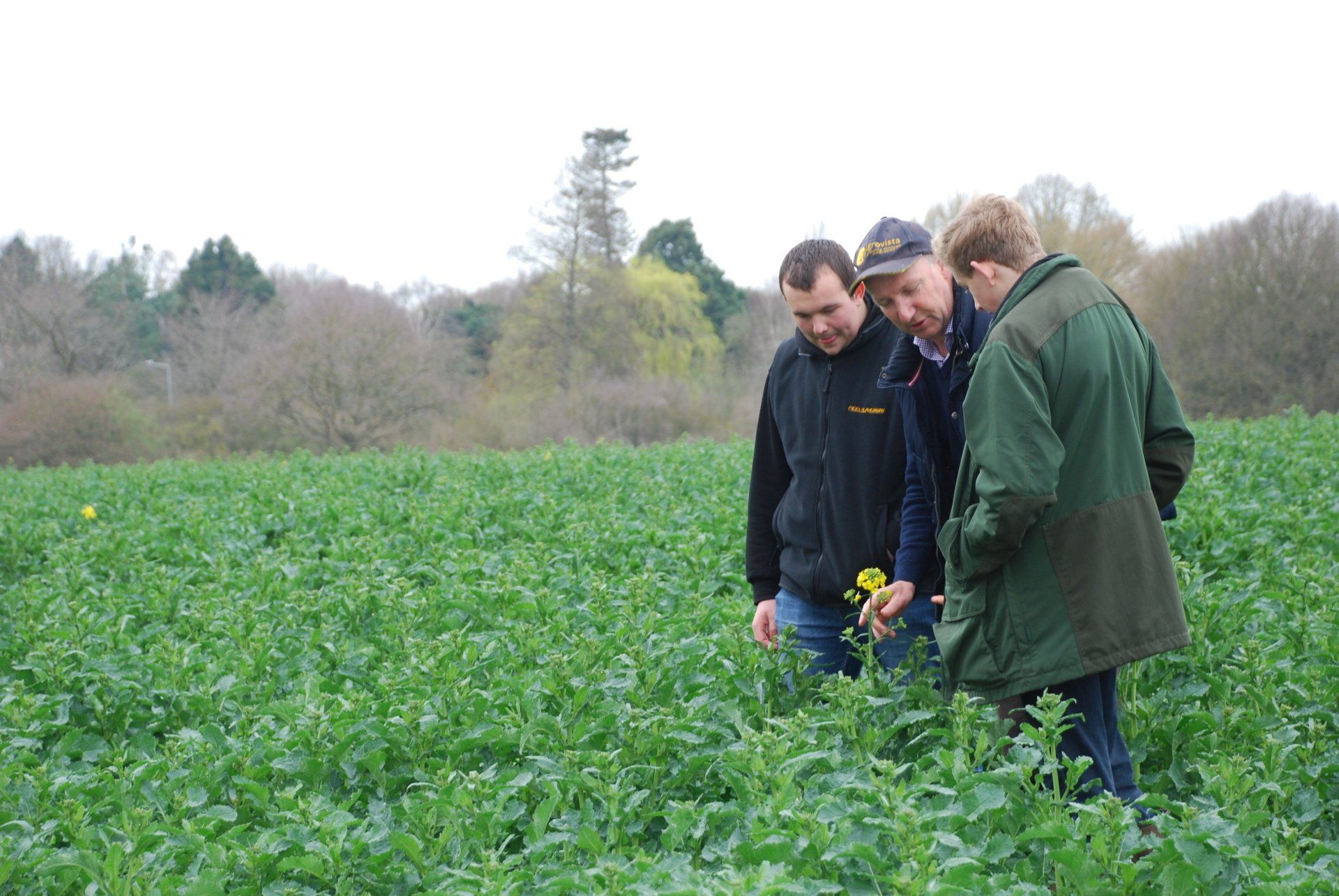Regenerative Agriculture - An Academic Perspective
Regenerative Agriculture is an approach to growing food that focuses on enhancing and restoring soil health, bringing benefits both to nature and humans.
Minimising soil disturbance, keeping it covered, maintaining root systems, integrating livestock, and crop diversity are all key components.
Henry Matthews is Senior Lecturer at Writtle University College in Essex and leads their BSc (Hons) in Agriculture (Regenerative Systems) and explains more here.

The most important issue facing the human race over the next few decades is how the planet can provide sufficient food to meet the needs of the rapidly growing population. It is estimated that at least 50% more food will have to be produced by 2050. Both the Covid pandemic and the brutal invasion of Ukraine by Russia have highlighted problems surrounding food security and international supply chains. This is at a time when the planet is facing or might even have passed a tipping point when climate change and environmental degradation is reducing the ability of farmers to produce a consistent supply of nutritious food.
The second half of the twentieth century witnessed huge increases in agricultural production. In the UK this followed the 1947 Agriculture Act. The Act aims were increasing domestic agricultural production and encouraging investment and employment through guaranteeing prices. Wheat yields according to Ministry of Agriculture figures rose from on average under 1 tonne a hectare in the 1940s to 5.5 tonne a hectare in the 1980s. The huge increases in yields were a result of a combination of improved varieties, the use and availability of artificial inputs particularly fertiliser and fungicides and the use of larger machinery facilitated by the increasing size of fields.
Encouraged by subsidies, fields were drained, woodland grubbed up, ponds filled in and meadows ploughed up. Farms became specialised in specific crop or livestock enterprises with a resulting loss of diversity in cropping and the loss of habitats for flora and fauna as fields were enlarged and the size of farms increased. The support provided by the Agriculture Act was replaced by the provisions of the Common Agricultural Policy the strategy of which was similar; to boost production and provide employment in agriculture and other enterprises in rural areas.
However this output came at a cost to biodiversity, the landscape and employment in rural areas. The impact of these changes is well documented and although there were dissenting voices such as Rachel Carson who published ‘Silent Spring’ in the early 1960s, this emphasis on production continued until the early 1990s.
Farmers could find the solution to most problems on the farm in the spray shed, the fertiliser store or the veterinary medicine cabinet. Farm management was concerned with how best to combine the technology of chemistry and machinery supported by a subsidy system to maximise yield with little concern for the externalities of this type of production. This mentality and approach still exists among many farm managers and farmers brought up and moulded by the system in which they have remained for all of their working lives.

Similar increases in crop yields and livestock production happened in other parts of the world including the much-vaunted ‘Green Revolution’ which through the work of Norman Borlaug developing high yielding varieties of rice and wheat. This was accompanied by increasing use of fertiliser, particularly Nitrogen.
As the financial cost and the environmental impact of this system became apparent during the 1980s and 1990s. Surplus grain mountains and milk lakes were publicised and EU policy makers began to question the policy and its strategy. There then followed a series of policy measures starting with McSharry Reforms in the early 1990s through to the decoupling of payments to production in the 2000s. These were accompanied by environmental schemes to pay farmers and landowners to introduce, restore and encourage biodiversity landscapes.
The 21st Century has seen the continuation of greater emphasis on environmental outcomes in policy, which has been accompanied by an awareness of the need to restore and promote biodiversity and landscapes. More interest in the provenance of food and the quality of nutrition has also stimulated interest in our food system and this has been shown by the steadily increasing demand for organic products.

The concept of Regenerative Agriculture has become more mainstream in recent years based on the principles of;
+ Minimising soil disturbance + keeping the soil covered + maintaining living roots + integrating livestock and diversity of crop. It also encourages the development of short local supply chains supplying high quality nutritious food.
Soil management is at the centre of Regenerative Agriculture. The extractive nature of agriculture in the last 70 years, relying on artificial inputs to replace those taken by the crops, has been unsustainable with an identified drop in nutrient value and density of fruit and vegetables as levels of protein, calcium, phosphorus, iron, riboflavin and vitamin C. As J.I.Rodale the founder of the Rodale Institute wrote in 1942 ‘Healthy Soil = Healthy Food = Healthy People’.
In 2020, Writtle University College launched the UK’s first degree in Regenerative Agriculture. The course encompasses thinking across conservation agriculture, agro-ecology, climate smart agriculture, carbon farming, technology use, and integrated management practices. The course encourages students not only to understand production processes, but also the wider environment and society in which they operate. This includes farm-level practices and ways in which they contribute to global goals of building resilient local food chains, the provision of ecosystems services and mitigating the impact of climate change.

In an exciting new project, students are in the process of converting a section of the University College’s estate over to regenerative production, supported in this by Essex NFU Charitable Trust. Members of the BSc (Hons) Regenerative Agriculture course have drawn up plans for area that will follow regenerative principles.
They aim is to use crop rotation and cover cropping to maximise soil fertility and climate resilience. This will minimise the need for external inputs and reduce pressure from pest and disease. Herbal leys will include plants chosen for their capability to improve soil structure, capture carbon, attract pollinators and increase biodiversity.
By grazing the herbal leys, livestock will provide natural weed control and fertiliser. This has the added benefits of supporting the animals’ health and decreasing feed costs. No till and minimum tillage techniques are central to regenerative agriculture and the sustainable management of soil. The inclusion of alley cropping increases ease of rotation and allows the integration of agroforestry.
For more information - Click here for Writtle University College’s courses,
WildEast Blog

Powered by LocaliQ
Follow Us
SIGN UP FOR NEWS & UPDATES
Newsletter Sign Up
Thank you for signing up to our newsletter.
Please try again later.
Privacy / Terms & Conditions / Sitemap

